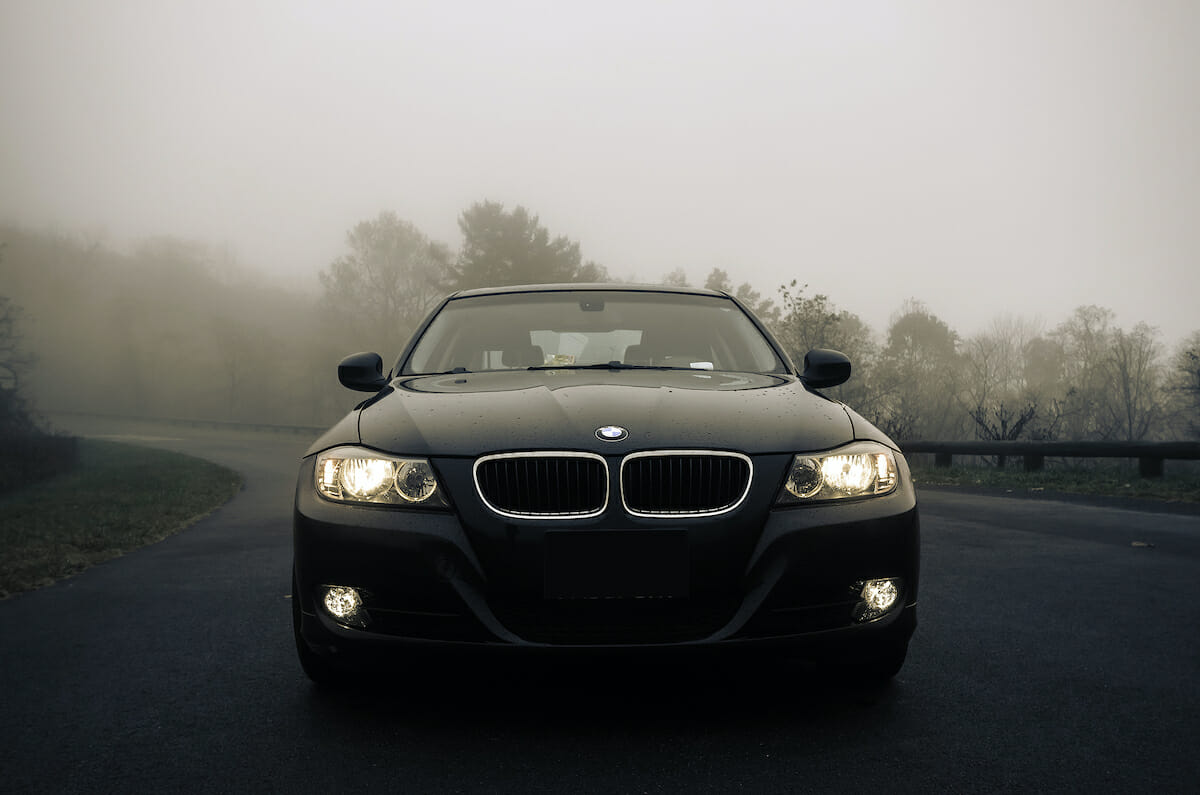
BMW invented the sport sedan over 50 years ago & today is an iconic brand with all the prestige as archrivals Mercedes, Lexus & Audi. We go in search of the all-time best Bimmer.
Produced from 1968 to 1977, the BMW 2002 enchanted car enthusiasts who sought sportscar handling in a compact, two-door coupe comfortable enough for a young family of four. The rare, fuel-injected 2002 tii version made 119 horsepower, which was pretty exceptional back then for a 2,300-pound car. BMW added the 5 Series midsize sedan, which competes directly with the Mercedes-Benz E-Class, in 1972 and went after the Mercedes S-Class, with the 7 Series sedan in 1977.
BMW replaced the 2002 with the slightly larger, heavier, more luxurious premium compact 3 Series, the car synonymous with “young urban professionals” – yuppies – in the 1980s. The BMW 3 Series became the envy of every other luxury brand on the road, as a model that sold in commodity car volumes. Before SUVs started to displace sedans in popularity, BMW typically sold more than 150,000 3 Series in the U.S., a remarkable number considering the premium prices and healthy profit margins it brought the brand.
Evolution from Premium Sport to Sporty Luxury
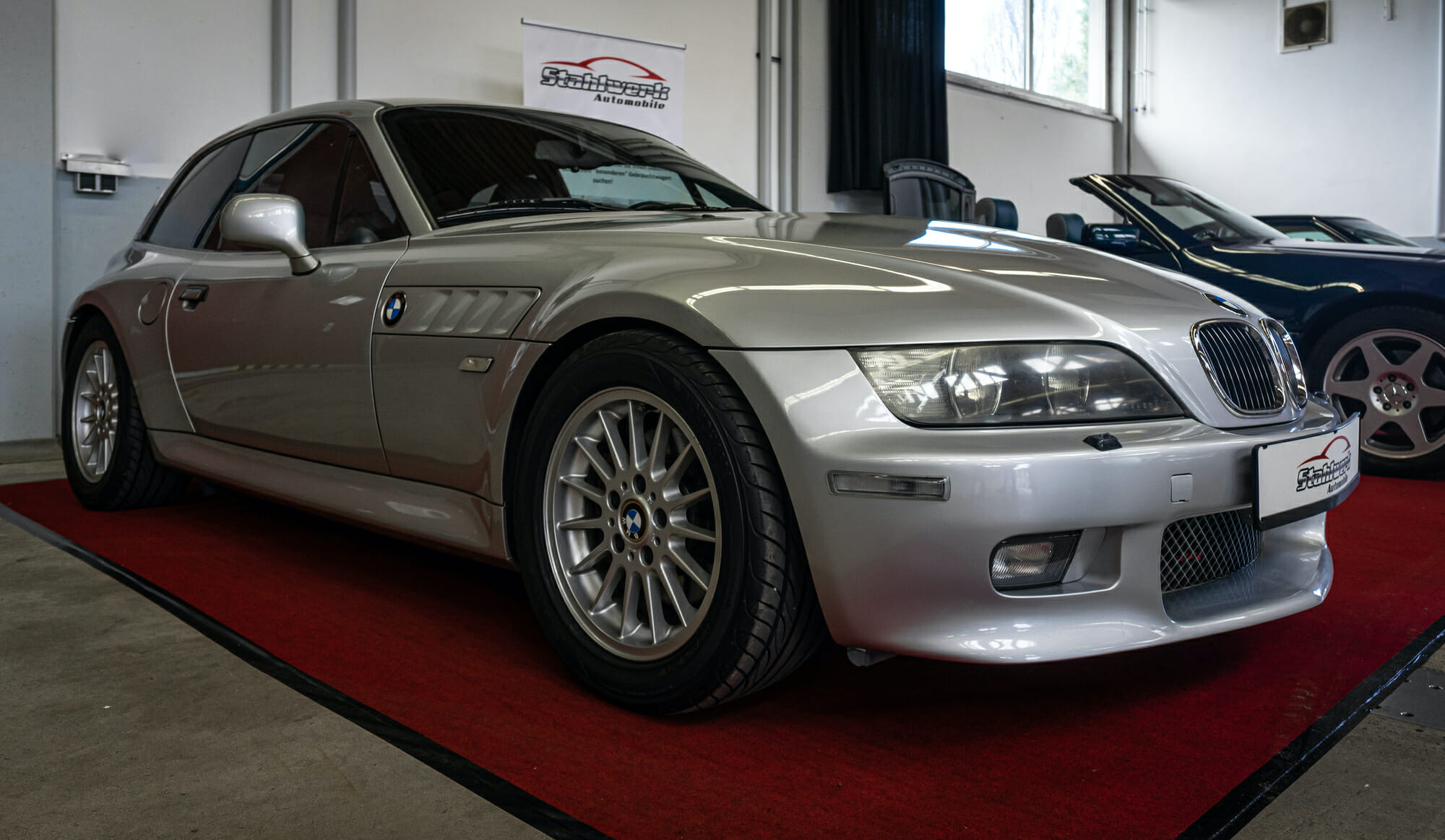
Through the rest of the 20th Century, BMW concentrated on coupes, sedans, and a few specialty models like the Z3 two-seat roadster launched for 1996, which had some success as a sort of rich person’s Mazda Miata. Despite fostering its yuppie image, the Bimmer brand (aficionados refer only to BMW’s motorcycles as “Beemers”) further built its reputation with auto enthusiasts by offering inline six-cylinder engines (inherently the smoothest internal combustion design of all) across its lineup, from the lightweight Z3 sports car and 3 Series sedan – now available with two or four doors – to the large luxury-size 7 Series sedan.
BMW & Motorsports: M Division
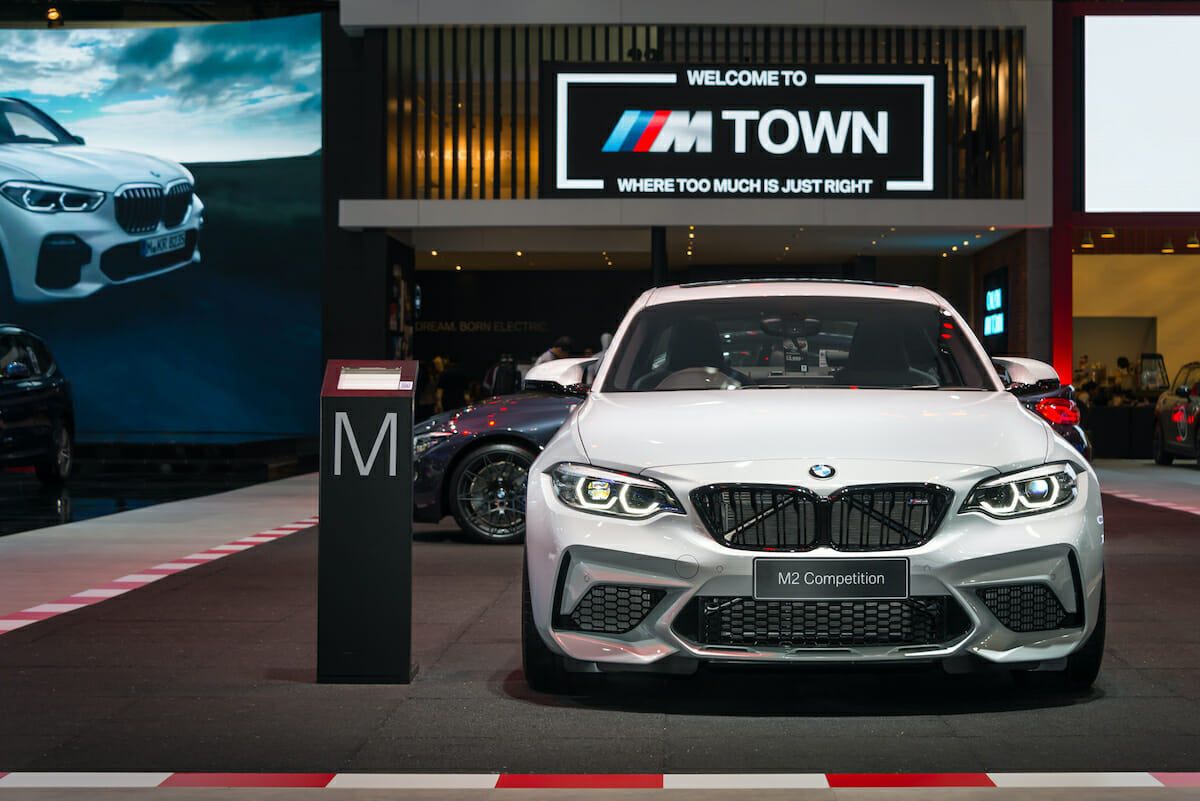
After success in European racing programs in the 1960s, BMW created the Motorsport division in 1972, later renamed M Division. It unveiled the M1 supercar, a road-legal midengined exotic at the 1978 Paris auto show, though its bread and butter were such road cars as its hot-rodded a version of the 5 Series, and from 1986 to 1991, the iconic M3, based on the second-generation 3 Series (E30). With exterior and interior tweaks, a sport-tuned suspension, and a high-performance, 16-valve naturally aspirated 2.3-liter four-cylinder engine that produced up to 238 horsepower, the lightweight two-door uber-sport sedan remains one of the most collectible Bimmers since the 2002.
More recently, M Division products have been split into two. Models with names like M3, M4, and M5 are the serious M-powered cars while adding “M” to the beginning of a nameplate like “340i” means it’s a tuned version of a standard BMW model, though also with chassis and appearance modifications. For example, the BMW M340i sedan ($55,735 base price) is powered by a 3.0-liter M TwinPower Turbo inline-six rated 382 horsepower.
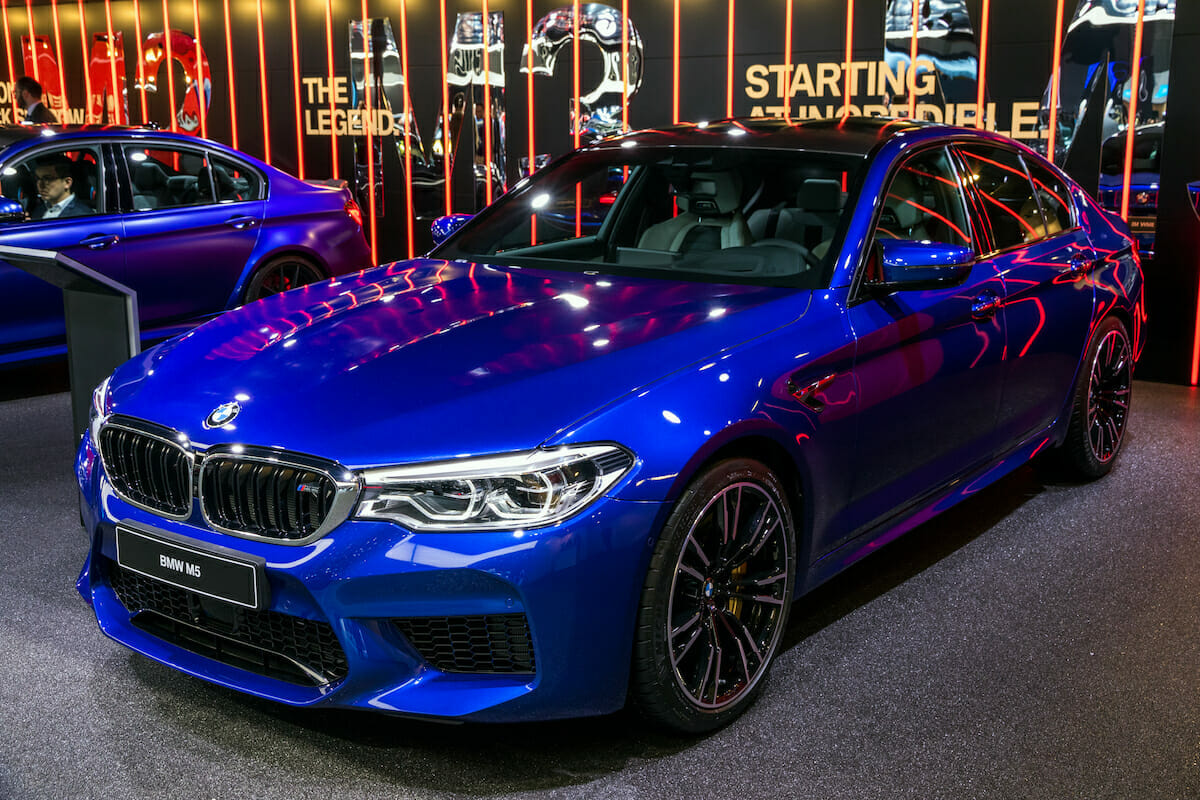
The M3 sedan ($70,895) comes with an M Twin Power version of the 3.0-liter turbo six tuned to 473 horses, and the ultra-edgy M3 Competition sedan ($73,795) bumps up the M Twin Power six to 503 horsepower.
BMW has never offered an M version of the 7 Series large luxury sedan, though U.S. dealers offer the BMW Alpina B7, with its 606-horsepower 4.4-liter twin-turbo V-8, as well as the X7-based Alpina B7 three-row sport/utility with a 612-horsepower version of the engine. Alpina is an exclusive, small-volume Bavarian tuner that has tweaked and massaged BMWs since 1965. The Alpina B7 starts at $144,195. The Alpina XB7 starts at $142,295.
Racing Against Mercedes & Audi to Fill Every Niche
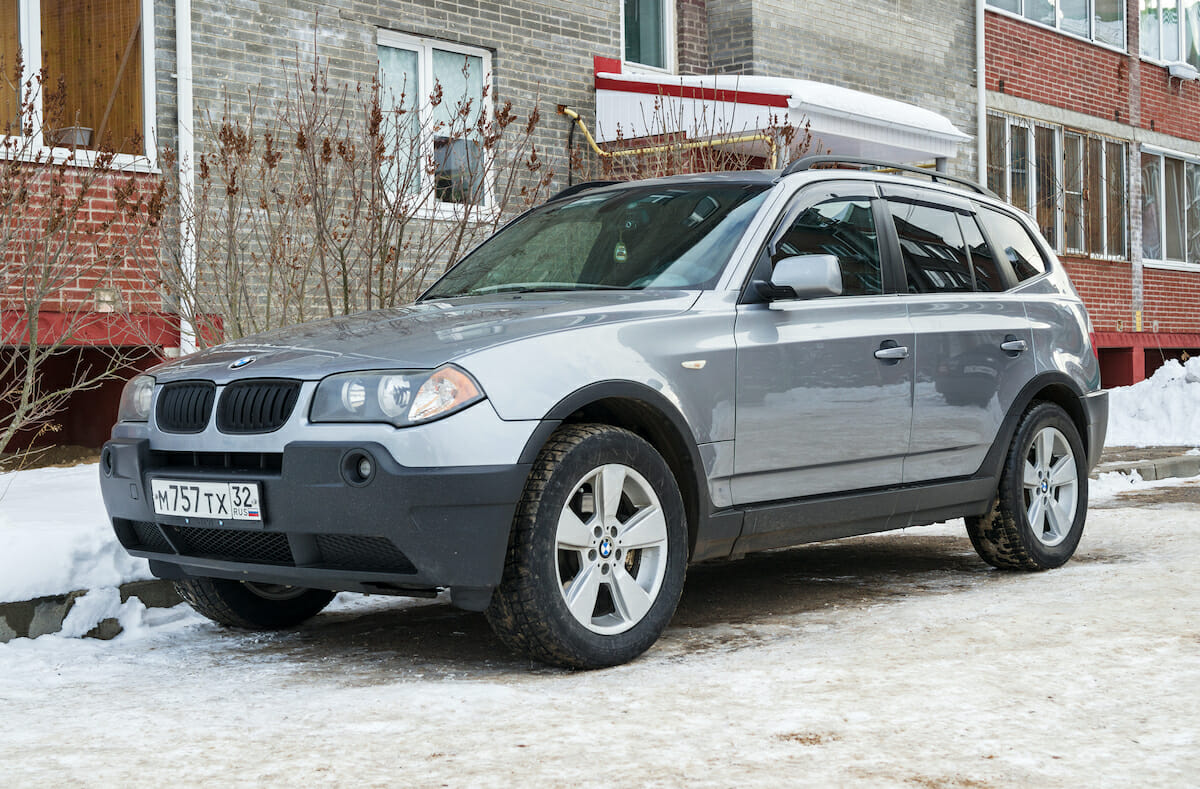
BMW’s first “truck” in the North American market was the X5 of the 2001 model year, a large-midsize luxury two-row SUV akin to the 5 Series sedan. Since then, BMW has added the X3 compact SUV, equivalent to the 3 Series, and the X1 small crossover SUV, which is based on Mini’s front-wheel-drive-based platform. (BMW purchased the British Mini brand in 1996).
The X7 is BMW’s latest sport/utility model counterpart to the 7 Series flagship sedan, with three rows of seating.
It must be noted that BMW’s marketing department, cognizant of how antithetical sport/utility vehicles are to the classic tagline, “The Ultimate Driving Machine,” insists on calling them “SAVs,” for “sport/activity vehicle.”
In 2014, BMW separated sedan models, designated by odd series numbers, and coupe models, now designated by even series numbers. “Coupe,” in modern BMW-speak can refer to a two- or four-door coupe body, even on an SUV, with a fastback roofline. Rear-seat passengers almost always pay a price for the rakish profile.
Among the sedans, the 8 Series is essentially a two- or four-door fastback coupe version of the 7 Series (though on a 119-inch wheelbase, compared with the 7’s 126.4 inches), and the 4 Series is the two- and four-door 3 Series coupe. A new entry-level model in the U.S., the 2 Series Gran Coupe, went on sale here last year, and while it shares the number with the rear-wheel-drive-based 2 Series two-door coupe and convertible, its underpinnings are from the front-wheel-drive-based Mini line.
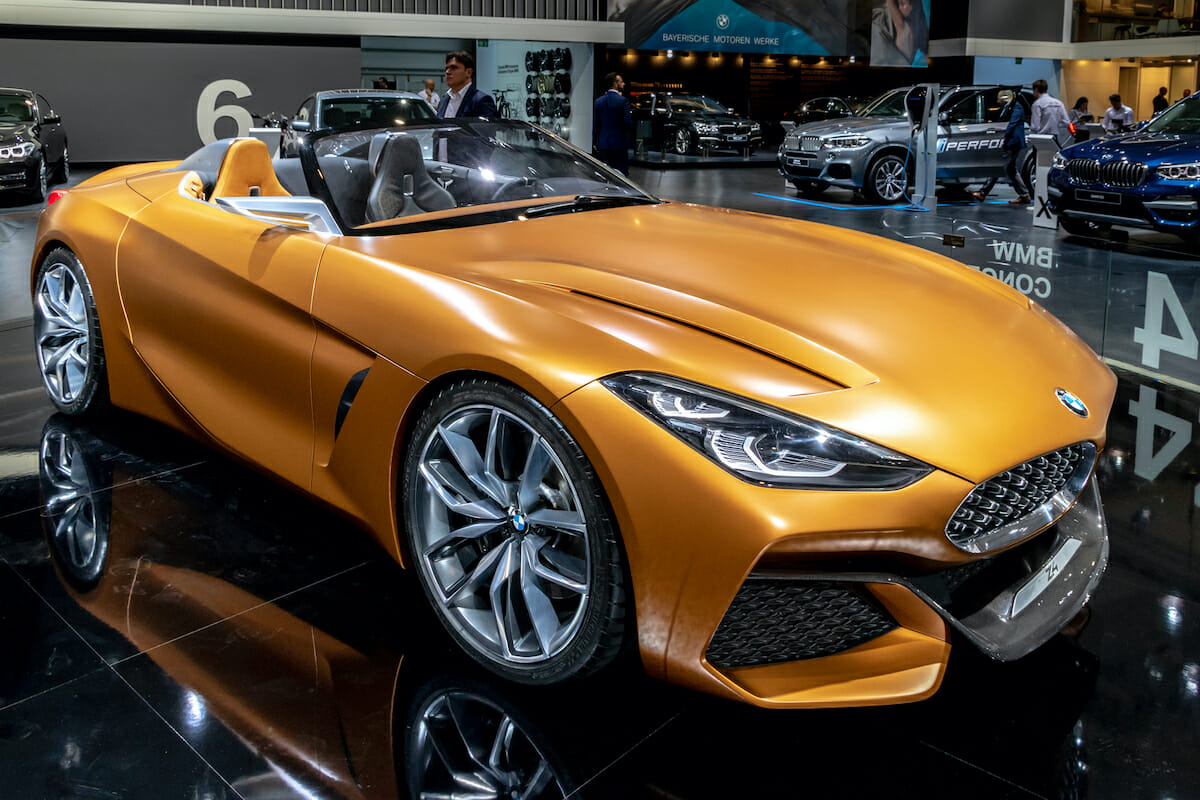
There is also the fourth-generation Z4, launched in 2018 and a somewhat more relaxed version of the Z3 roadster. Available as a convertible only, the BMW Z4 shares its platform and inline six-cylinder engine with the new Toyota Supra.
BMW’s electric vehicle development lags behind other luxury makes and other German automakers. There is the boxy, practical i3 electric car, ($45,445), available with an optional range-extender three-cylinder gas engine. Without the range-extender, the i3, on the market for seven years, has a total range on a full charge of just 153 miles. Compare with the much less-expensive Chevrolet Bolt, for example, which can go up to 259 miles on a single charge.
The last year for the much sexier i8 ($148,495), with an electric motor powering the front wheels and a turbo I-3 powering the rear, was 2020, though you can still find leftover models in some dealers nationwide. BMW will replace it with the iX all-electric crossover/utility for the 2022 model year, featuring a lightweight aluminum frame with carbon-fiber and steel body parts.
Plug-in Hybrids Versions of Conventional Models
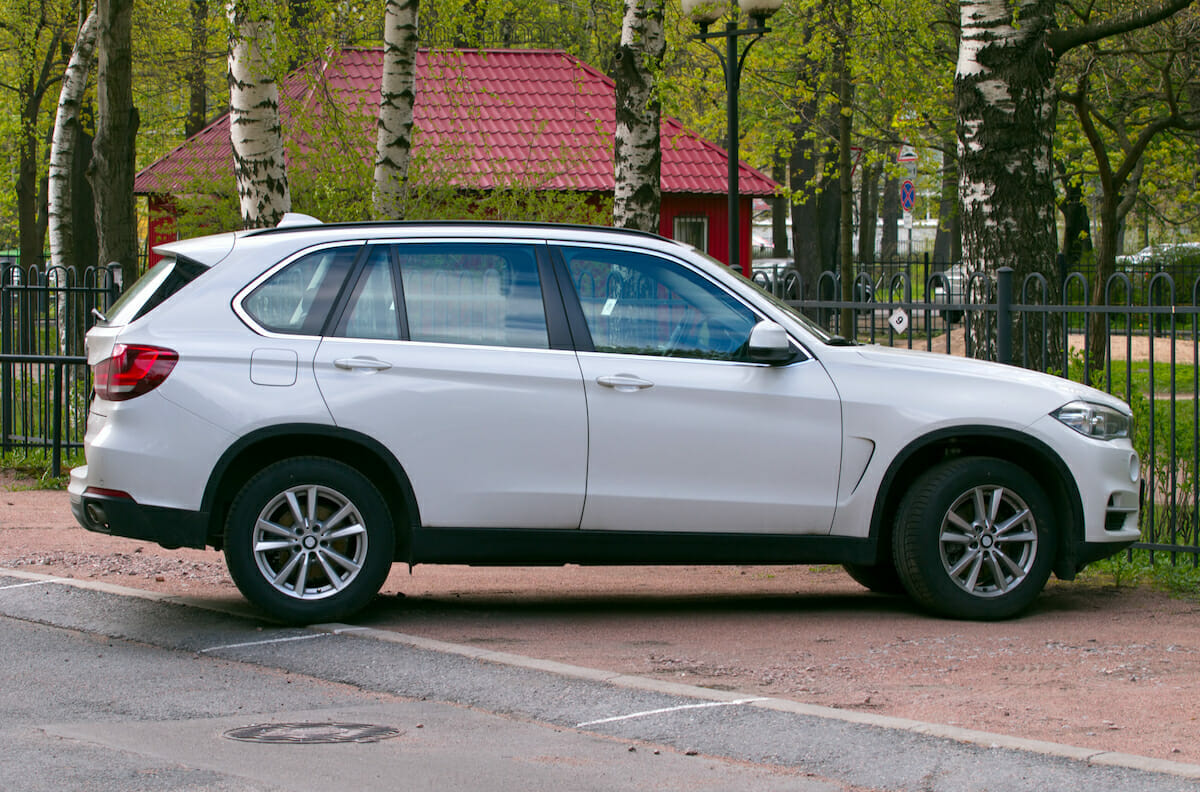
On its way to an electric-intensive future, BMW offers plug-in hybrid versions of the 3 Series, 5 Series, 7 Series, and the X3 and X5 sport/utilities.
The BMW X5 xDrive 45e ($66,395) has the longest pure electric range of these models, at 30 miles, with a 50 mpg-e EPA rating, 20 mpg combined on premium unleaded. A 3.0-liter twin-turbo I-6 and integrated electric drive combine for 389 horsepower and 443 pound-feet of torque.
The RWD version of the BMW 330e ($46,545) can go 22 miles on pure electricity, and AWD 330e xDrive ($47,545) can go 20 miles. Both are powered by a 2.0-liter twin-scroll turbo I-4 with an integrated motor under the rear seat, for a combined 288 horsepower and 310 pound-feet of torque. EPA fuel economy is 75 mpg-e/28 mpg combined, premium fuel for the 330e, and 67 mpg-e/25 mpg for the 330e xDrive. The 550e and 550e xDrive have the same engine/electric motor setup as the 330e, with a 21-mile (RWD) or 18-mile (xDrive) pure electric range. The 550e is EPA rated 64 mpg-e/26 mpg gas combined, and the 550e xDrive is rated 62 mpg-e/25 mpg combined.
The BMW 745e xDrive ($95,995) shares its six-cylinder-electric motor powertrain as the X5 xDrive 45e and is rated 56 mpg-e/22 mpg. PHEV versions of the 3, 5, 7 Series, and X3 are eligible for a federal tax credit of up to $5,836, and the X5 xDrive 45e is eligible for a $7,500 maximum credit.
Which BMW is Best?
The answer to this question brings us to a fork in the road. The best BMW for you probably is not the best BMW for enthusiasts who consider the 2002 tii or the E30 M3 the Ultimate Driving Machine. Like its competitors, BMWs have become substantially bigger, heavier, and more complicated in the 21st Century, and since the revival of Audi as a premium-luxury brand, the three German prestige marques have been chasing each other model for model, technology for technology.
Such BMW models as the 8 Series, 7 Series, 5 Series are sold (or more likely, leased) either to loyal customers who trade-in for the same car every three years, or go to a direct competitor if it has a new model. The 2021 BMW 5 Series (starting at $55,215) must compete with the all-new 2021 Mercedes E-Class sedan, with the latest in electronic gadgetry and driver assistance features. The 5 Series is typically on a seven-year product cycle. The current model launched in 2017, so the Merc E-Class will face fresh BMW competition by 2024.
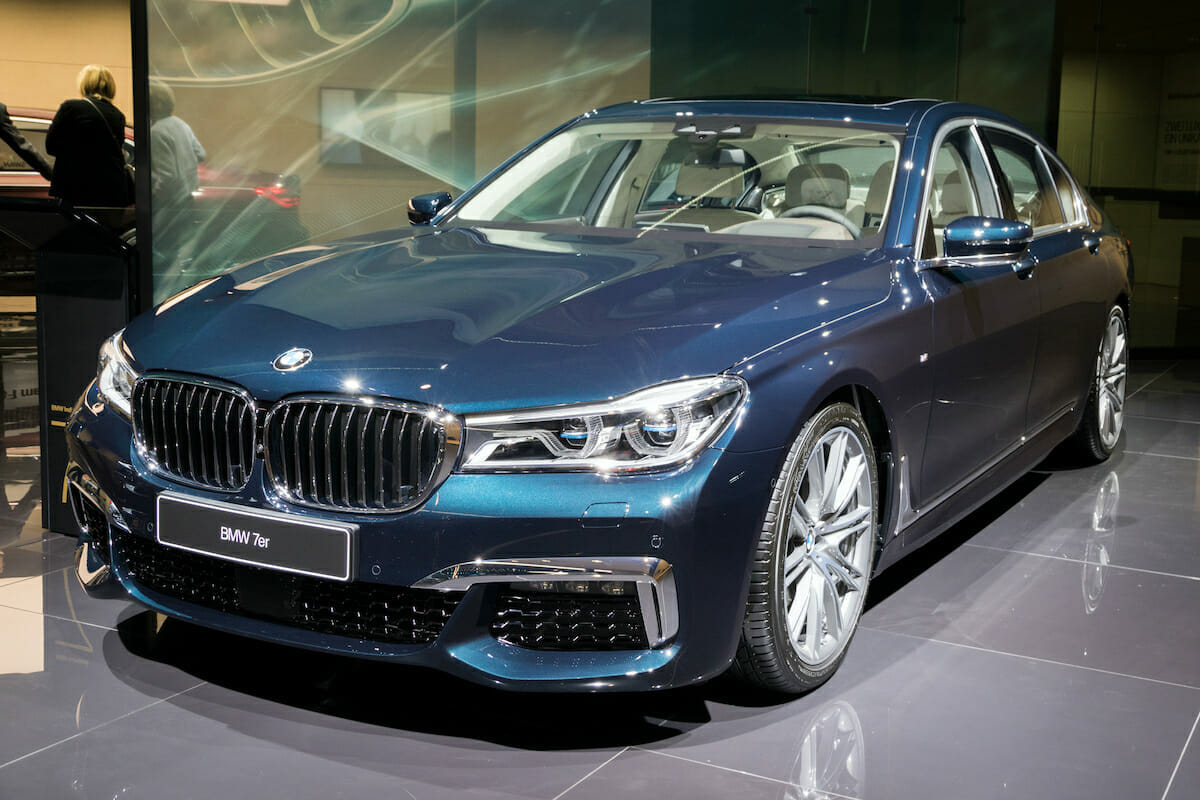
Similarly, the BMW 7 Series ($87,795) will soon face a new Mercedes S-Class. The two- and four-door 8 Series ($85,995 for the four-door Gran Coupe) competes with three Mercedes models; The CLS, S-Class coupe, and AMG GT four-door coupe. This segment relies as much on styling and branding preferences for sales loyalty as it does on the latest technology.
The X7 sport/utility ($75,895) is an audaciously styled brick of a three-row luxury model that’s not unique in its excessive approach to the segment. Worthy competitors include the upcoming Jeep Grand Cherokee L, Mercedes-Benz GLS-Class, Audi Q7, and most of the Land Rover Range Rover lineup.
The Z4 ($50,695) is truly a niche sports car, having grown substantially larger, heavier, and more relaxed since its “rich man’s Miata” days.
It should be noted that these base prices represent cars and SUVs you’re not likely to find on dealer lots. Like Mercedes and Porsche and several other brands, BMW is a pro at “personalization,” which means it offers long lists of options, accessories, paint schemes, and interior fabrics, leathers, and trim details that can add 50% or more to the window sticker’s bottom line.
This brings us to the most popular BMW models, the X3 and X5 SUVs, and the 3 Series sedan, which when combined with its platform-sibling 4 Series coupe numbers, edged out the X5 as the brand’s second-bestseller in the U.S. last year.
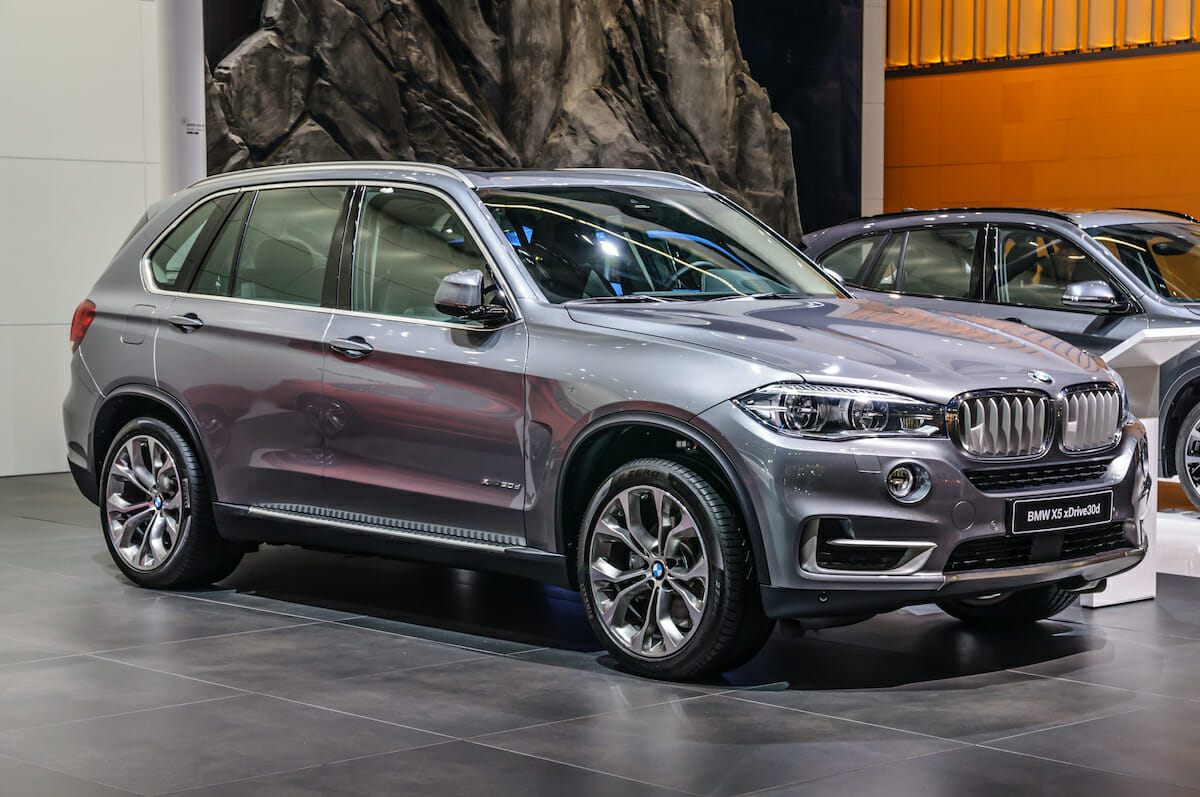
The X3 ($43,995) is BMW’s bestseller, as a competitor in the most popular segment for both commodity brands and premium brands – it’s a two-row compact sport/utility available as an RWD model, or an AWD model (add $2,000 over the base price), as well as the plug-in hybrid described above. The non-PHEV models are available only with the 2.0-liter turbocharged inline-four and eight-speed automatic transmission, achieving 29 mpg combined whether RWD or AWD. If you’re smitten with the idea of driving an SUV that handles like a sport sedan, BMW also offers the X3 M40i $57,595), with the same 382-hp 3.0-liter twin-turbo six as the M340i sedan described above, and rated 27 mpg EPA combined, and the X3 M ($69,995), the SUV version of the M3 sedan with the 473-horsepower version of the twin-turbo I-6, rated just 19 mpg EPA combined.
The “four-door coupe” with the fastback roofline that’s based on the X3 is the AWD only X4 xDrive, which starts at $52,595 and is also available with the M Division’s turbo I-6 engines.
BMW’s sport/utilities have never captured the magic of the 3 Series’’ ride-handling balance, in which the sedan (and its ancestors) could carve up a twisty road without relying on a stiff suspension that would make you feel beat-up at the end of the ride. For driving enthusiasts, it was magic.
All BMW models now feature complicated driver-controlled chassis modes to make that balance easier to achieve, by stiffening or softening the springs and shocks. Particularly in the M-tuned models, this simply cannot overcome the physics of a relatively big, tall, and heavy vehicle with the unsprung weight of 21-inch wheels.
This is especially true of the bigger, two-row midsize X5 midsize SUV ($60,395 with RWD, $62,695 with xDrive AWD), available with wheels as large in diameter as 22 inches, in the $106,095 X5M, which is powered by a 600-horsepower, 4.4-liter twin-turbo V-8 from the M5 sport sedan. With such power, the X5M will impressively pull away from freeway traffic with a quick flick of the right foot, but it’s too large to slalom through a tight set of turns like the cars for which BMW built its reputation.
That leaves the 3 Series sedan ($42,245), which is complemented by the 4 Series two-door coupe on the same 112.2-inch wheelbase and sharing most chassis bits. Standard 330i models as well as the PHEV (see “Plug-in Hybrids”) are powered by the 255-horse, 2.0-liter turbo I-4, with eight-speed automatic and EPA rated 36 mpg combined with RWD, 34 mpg combined with xDrive AWD. The M3 and M3 Competition models are the only 3 Series still available with a manual gearbox.
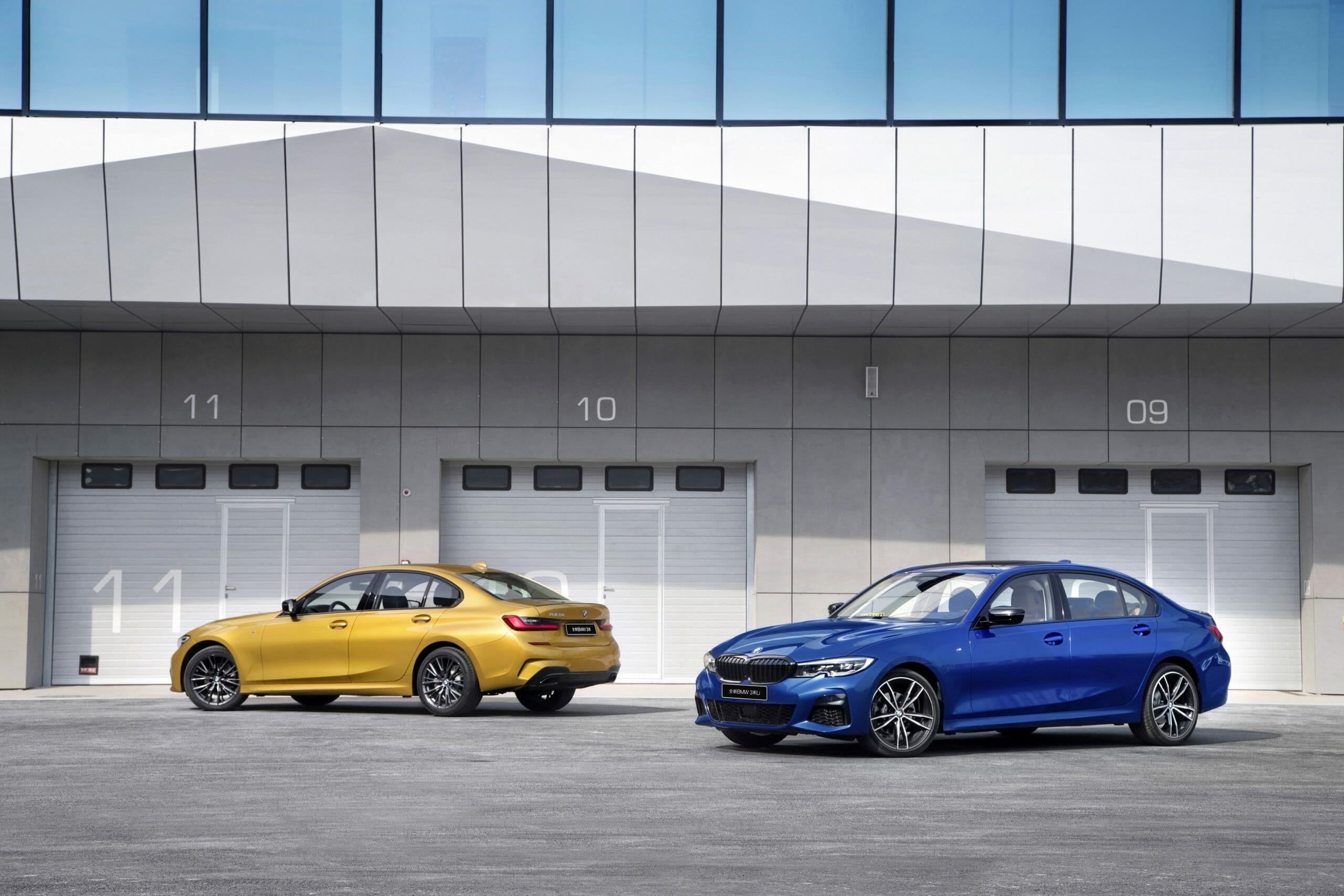
Bimmerphiles complain that the 3 Series lost its plot a couple of generations ago, especially with a new, variable-ratio steering technology that replaced a benchmark for feel, feedback, and response. While the 2021 BMW 3 Series doesn’t have the cargo capacity or rear-seat comfort of an X3 or X5, it remains the icon for the brand, the BMW most consumers should pick if they can resist the draw of curiously popular sport/utilities.
Hardcore enthusiasts will want to drop an integer to the 2 Series two-door coupe or convertible, the spiritual rear-wheel-drive successor to the 2002 and E30 3 Series. Steering feel and feedback is better than with the 3 Series, and it’s available with manual or automatic transmissions, even if you go for the “base” 230i ($36,895) with 248 horsepower 2.0-liter turbo I-4 (xDrive adds $2,000). Combined EPA fuel economy is 32 mpg with RWD, 30 mpg for xDrive AWD. Top model is the $59,895 BMW M2 Competition coupe, with a 405-horse 3.0-liter twin-turbo I-6, rated a reasonable 24 mpg EPA combined.
BMWs to Avoid
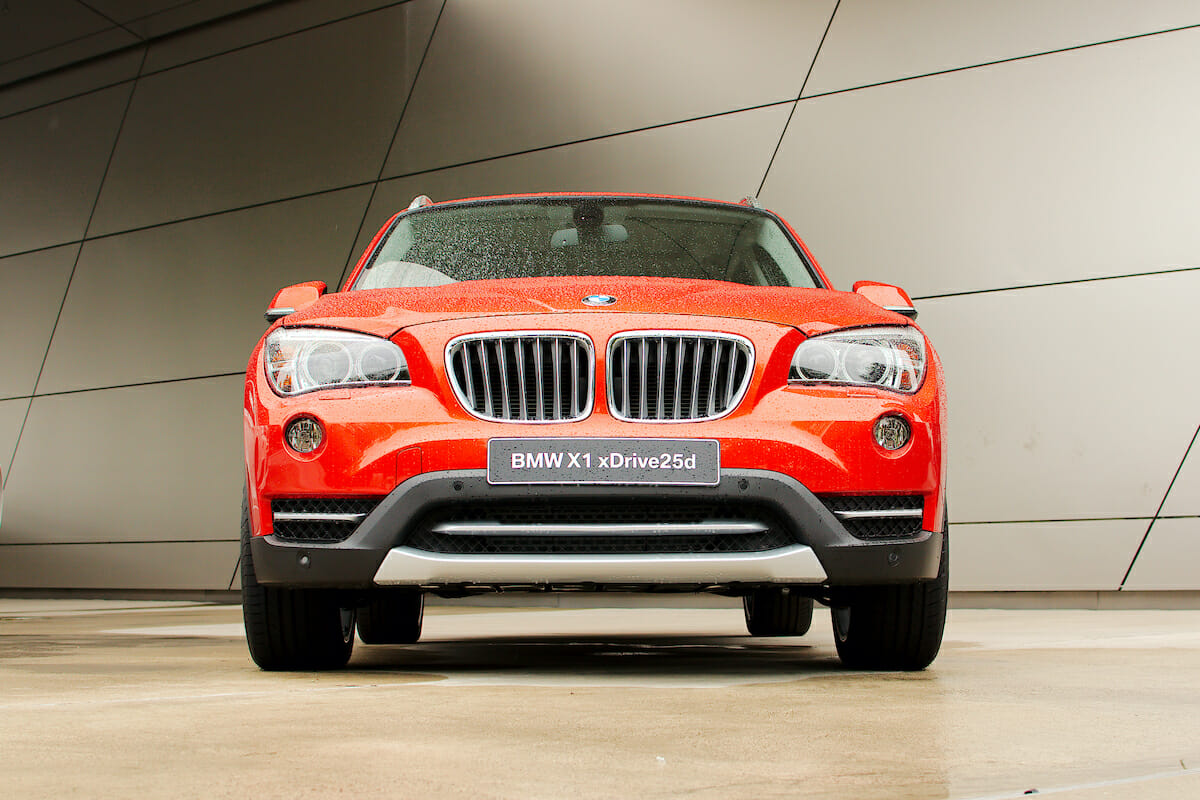
The Mercedes-Benz CLA-Class and Audi A3 entered the entry-premium market a few years ago, with prices starting in the upper end of the commodity car range. BMW caught up last year with the 2 Series Gran Coupe – no relation to the 2 Series coupe and convertible, which will be discontinued at the end of their product cycle. The BMW 228i Gran Coupe is powered by a 228-hp, 2.0-liter turbo I-4 (33 mpg combined) and starts at $36,695. BMW’s X1 ($36,395) and X2 ($37,595) were already competing with crossover versions of the Mercedes and Audi.
The three small BMWs are based on an FWD, transverse-engine platform shared with BMW AG’s Mini brand. There’s nothing wrong with FWD, especially in small vehicles. But purists may never accept an FWD-based BMW and these three models have the ride, handling, and feel of a Mini. If you walk into a BMW dealership for the 2 Series Gran Coupe, X1, or X2, instead of a Mini store for similar models, the salesperson will probably talk you up to a 3 Series, X3, or X4 for “a few bucks per month more anyway.”
Photos: BMW; DepositPhotos
